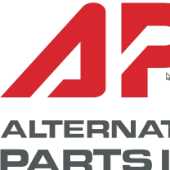If you work at the laser cutting shop, you would notice that operators often offload the metal sheet of cut parts. After that, they would pick up the cut pieces from the nest for clean edges to make the sheets ready for the next operation.
Mostly right? But sometimes, you would notice that burrs on the surface still remains. It may vary from minor to major in size but with some precautions, you can reduce it. In order to discover the perfect setting, it is important for operators to know about the process in which a laser cutting beam, support gas, and workpiece get in contact to create perfect cut edges in the product.
Achieving a burr-free laser cutting is no longer a magic. It’s a strategy that revolves around the proper operation of laser parts which you need to understand thoroughly to resolve it. Let’s see how.
Which Parameters to Check?
In general cases, the modern machine controls the laser beam elements. Like the beam profile and beam power. The beam focus consists of a particular grade, thickness based on optical focus.
To match the true focus position on the workpiece, automated technicians usually check a number of parameters including beam alignment, delivery system, centering the nozzle, focus position, etc.
If the operator observes a burr at the bottom of the cut part of the stainless-steel sheet, then firstly the operator needs to slow down the cutting speed of the laser beam. You can justify the reaction because in his perception, cutting speed is too high and the problem might have arisen from that.
Once the operator has slowed down the cutting speed and the gas pressure, he would find a bigger burr. Therefore, the creation of burr depends on how the beam, material, and gas interact. And once you understand their interaction, you would understand the creation of burr.
The Burr Formation Process
While you work with the laser machine, there’s an intense amount of energy emerging out of the laser beam. That brings the metal’s temperature above its melting point. Hence, metal exceeds the melting temperature, during this, a strong force of gas removes the metal from the kerf. When you use nitrogen, the cutting procedure totally depends on the beam’s energy to melt the metal. But when you use oxygen gas to cut the carbon steel, it seems that hot metal interacts with oxygen that creates an exothermic reaction with added heat.
In such cases, they form the burrs due to the molten metal which solidifies before removing. That solid material would remain tougher at the bottom of the kerf, eventually forming a burr.
But what hardens the metal before you remove it?
Gas Kinetics
The operator should ideally alter efficiency, quality, and cost when nitrogen gas is concerned. Nitrogen can reach up to 50% of the variable costs. Therefore, it is important to control the consumption of such gas in laser cutting. Consider using Trumpf laser parts in order to maintain quality outputs. Make sure to select the smallest Trumpf laser nozzles to attain the desired quality of performance.
It is important to note that when it comes to supporting gas flow, nozzle size and diameter would make a big difference. When deciding, go for the smallest Trumpf laser nozzle size as they will get you a good quality of laser cutting without any burrs. Eventually, you can increase your flow rate with good molten metal separation without going high on pressure.
Slow is never better
The logic of “lower and smaller” diameter of nozzle and gas pressure is not applicable to the cutting speed. Hence, while you slow down the cutting speed, you would end up welcoming more heat than required in the kerf. Along with this the temperatures also rises and cause vaporization which disturbs the gas flow. As a result of it, this disturbance creates more burrs which make the quality even worst. You need Trumpf laser nozzles to ensure the proper interaction of cutting beam and gas which is the best way to avoid burrs.
Additionally, the operator can also save the material from burrs by increasing the cutting speed precisely. This increase in speed would minimize the heat and the ablation while restoring the gas flow dynamics to its appropriate state.
Carbon Steel Cutting by Assist Oxygen Gas
While shifting to oxygen cutting for carbon steel, the exothermic reaction needs to be at an accurate level because here, the oxygen purity level will play a crucial role. It is common that oxygen-cutting carbon steel benefits from a higher level of oxygen gas purity. We can increase the cutting speed by 30 to 40 percent if we work with 99.95 percent of oxygen global purity.
A detailed guide to eliminate the creation of burrs in laser cutting and achieve a stable process to produce smooth cutting edge results.
Burr-free laser cutting is all about ensuring that the beam parameters and gas dynamics work in synchronization. Moreover, you also need to ensure that you are using superior quality laser parts like Trumpf laser parts for the best and burr-free laser cutting.
Source:- https://www.sooperarticles.com/business-articles/industrial-mechanical-articles/how-achieve-burr-free-laser-cutting-1723555.html



Leave Comment